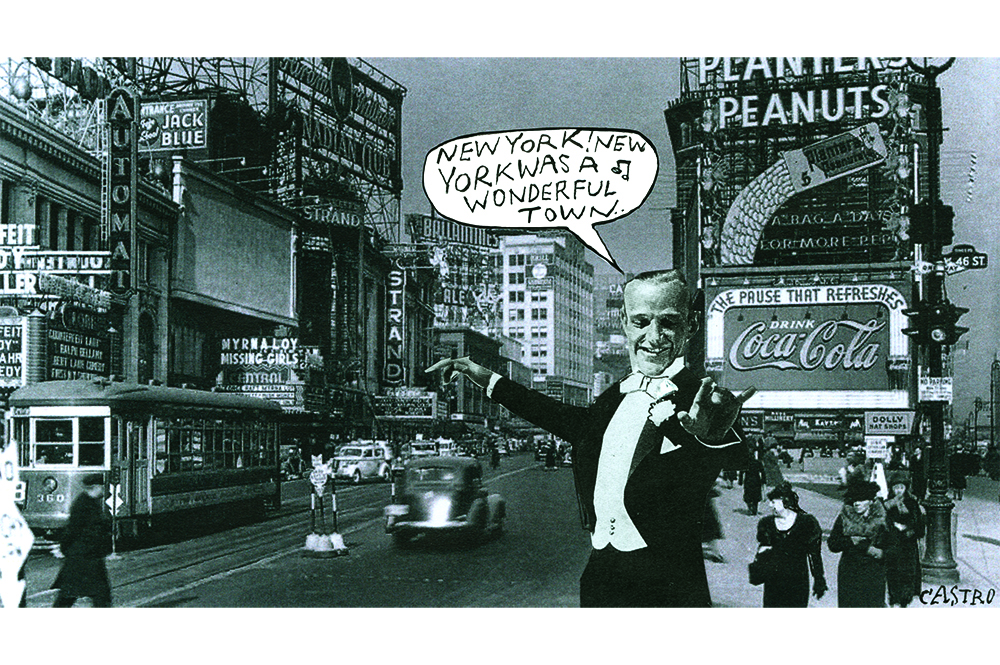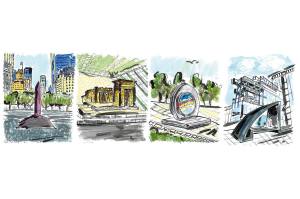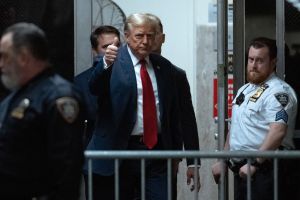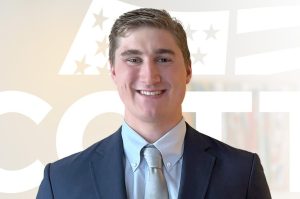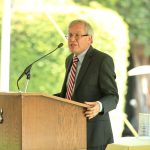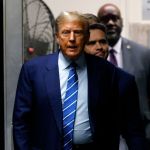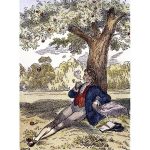In 1961, over half a century ago, my parents accompanied me as a baby by ocean liner across the Atlantic to New York. For two years we lived in Manhattan while my father worked for a Wall Street investment bank. Perhaps in the hope that I would make money, I was baptized in the immensely wealthy Trinity Church on Broadway at Wall Street, and I learned to walk in Central Park. During our homeward journey to Southampton on the legendary Queen Elizabeth, I won the ship’s Best Dressed Baby competition as the Roman sea-god Neptune. The ‘Lizzie’ (as the ship was affectionately known to Cunarders) represented all the glamor of pre-Jet Age travel by sea.
I missed my flight to New York as I neglected to secure a US visa-waiver or ESTA in time. ‘Sorry, Sir, no form, no flight,’ Heathrow security informed me. Britons are allowed to stay in the US for 90 days without a visa if they pay $14 beforehand for an Esta (Electronic System for Travel Authorization). Usually online clearance takes five minutes, but the US Customs and Border Protection website had crashed and I was unable to process my application. After hours of swearing while applying on my laptop, I was advised by British Airways staff to call it a day. Next day, fortunately, I was at last at JFK and on my way to see friends in Brooklyn.
Walking across the Brooklyn Bridge into Lower Manhattan offers a visual education in the grand style. Mist was blowing in drifts off the East River and already I could feel the intoxication of New York. At Grand Central station the Salvation Army was belting out carols beneath a billboard reading IS YOUR TESTOSTERONE DECREASING? while Trinity Church was strung with colored lights. My baptism in the Financial District church in December 1961 was officiated by the Rev Bernard C. Newman, a Harvard-educated Episcopalian who did much to help the Lower East Side poor (the church virtually owned the Lower East Side), as well as Manhattan bankers like my father. The church happens to be the resting place of Alexander Hamilton, hero of the Broadway hip-hop extravaganza. In the 1780s, Hamilton had written two Federalist essays about impeachment; as Hamilton’s biographer Ron Chernow noted recently in the Washington Post, he would ‘certainly have endorsed’ the current inquiry into Donald Trump.
Following a day’s work at Manufacturers Hanover Trust (‘Mani Hani’), my father liked to stop off for cuts of salmon at Fulton Fish Market before the A train took him to Gainsborough Studios at 222 Central Park South, where we lived. Built in 1908, the apartment building stands down the street from the gilded fantasia that is now Trump Parc East on Sixth Avenue. A bust of the 18th-century Suffolk artist Thomas Gainsborough still inhabits the alcove above the entry doors. On the top floor lived the British-born sculptor Bryant Baker, whose gigantic 1930 statue of the Pioneer Woman is a landmark in Oklahoma. The Irish doorman, Joseph Shovelin (‘like shoveling snow but without the g’), offered to show me around after I mentioned my 90-year-old mother back home in London. (‘For Mom, always’.) The views over Central Park with the trees white under frost were postcard picturesque. ‘The skyline’s changed a little since you was a baby, sir. But, hey! Christmas is coming and the geese are getting fat.’ Mr Shovelin patiently showed me out. On the sidewalk, a woman was putting her poodle in a cab amid the eastbound traffic.
Afterwards I found myself under the elevated subway on Stillwell Avenue in Coney Island where William Friedkin filmed the car chase sequence in The French Connection. DON’T WALK read a flashing sign, but everyone jaywalks in this part of Brooklyn-on-Sea. The Russian and Ukrainian communities of Coney Island’s ‘Little Odessa’ seem mostly to lounge on deckchairs on the boardwalk. At a Ukrainian café I wolfed down a plate of pelmeni and fruit pirozhki, with superior borscht. Coney Island is a melancholy place out of season. The Ferris Wonder Wheel and even Nathan’s Famous hot dog stand (‘Since 1916’) are closed. Members of the Coney Island Polar Bear Club, America’s oldest winter bathing club, were braving the icy waters in sight of the Rockaway peninsula.
After attending an Alcoholics Anonymous meeting in Brooklyn Heights opposite Truman Capote’s house (‘We love your accent’), I went to Mass at the beautiful St Agnes on Sackett Street. Dreadfully, the congregation had learned that their bishop, Nicholas DiMarzio, stands accused of sexually abusing an altar boy. I was pleased to escape by train through Harlem up the Hudson Valley to Eleanor and Franklin D. Roosevelt’s home at Hyde Park, now a branch of the National Archives. Roosevelt, a Hudson River squire, raised Christmas trees on his Hyde Park estate and even wrote ‘Christmas tree farmer’ on his voter registration card. A light snow was falling on the express tracks at Poughkeepsie station where I got off.
This article is in The Spectator’s January 2020 US edition.
